Corsair RM750 Power Supply Review: Affordable Yet Powerful
Why you can trust Tom's Hardware
Protection Features, DC Power Sequencing, Cross-Load Tests and Infrared Images
Protection Features
Check out our PSUs 101 article to learn more about PSU protection features.
| Protection Features | |
| OCP | 12V: 78.4A (125.44%), 11.993V 5V: 29.6A (148%), 5.023V 3.3V: 30.5A (152.5%), 3.281V 5VSB: 5.2A (173.33%), 4.926V |
| OPP | 956.5W (127.53%) |
| OTP | ✓ (98°C @ secondary side) |
| SCP | 12V: ✓ 5V: ✓ 3.3V: ✓ 5VSB: ✓ -12V: ✓ |
| PWR_OK | Proper Operation |
| NLO | ✓ |
| SIP | Surge: MOV Inrush: NTC Thermistor & Bypass Relay |
The over current protection (OCP) triggering points on the minor rails should be set lower, within 130% of the max nominal values. The over power protection (OPP) doesn't allow the unit to deliver more than 960W of power, while there is protection against high operating temperatures.
DC Power Sequencing
According to Intel’s most recent Power Supply Design Guide (revision 1.4), the +12V and 5V outputs must be equal to or greater than the 3.3V rail at all times. Unfortunately, Intel doesn't mention why it is so important to always keep the 3.3V rail's voltage lower than the levels of the other two outputs.
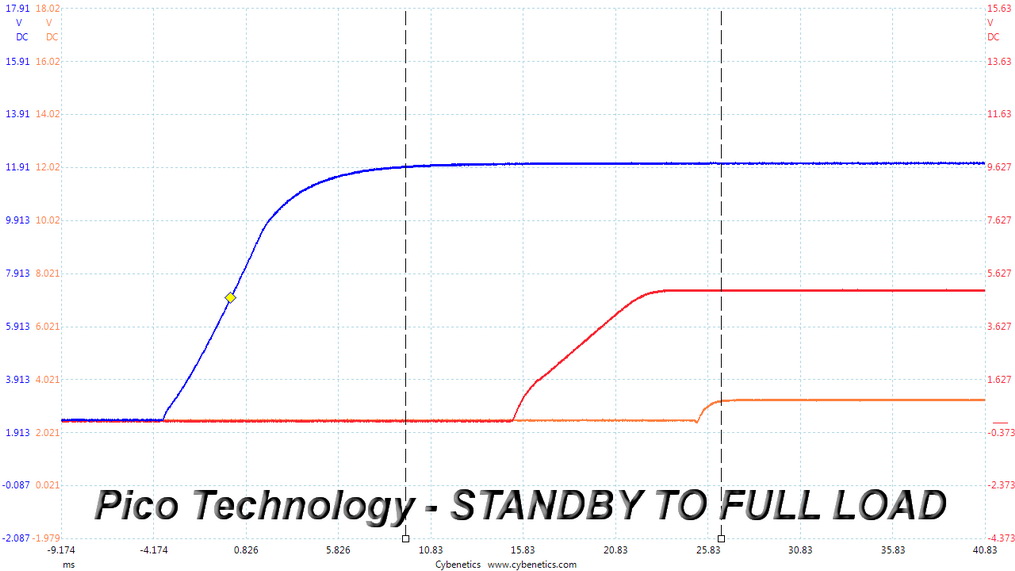


The 3.3V rail is always lower than the other two rails.
Cross Load Tests
To generate the following charts, we set our loaders to auto mode through custom-made software before trying more than 25,000 possible load combinations with the +12V, 5V, and 3.3V rails. The deviations in each of the charts below are calculated by taking the nominal values of the rails (12V, 5V, and 3.3V) as point zero. The ambient temperature during testing was between 30 to 32 degrees Celsius (86 to 89.6 degrees Fahrenheit).
Load Regulation Charts



Efficiency Chart
It would be nice to see a region with efficiency numbers exceeding 92%.
Ripple Charts
The lower the power supply's ripple, the more stable the system will be, and less stress will be also applied to its components.
Get Tom's Hardware's best news and in-depth reviews, straight to your inbox.


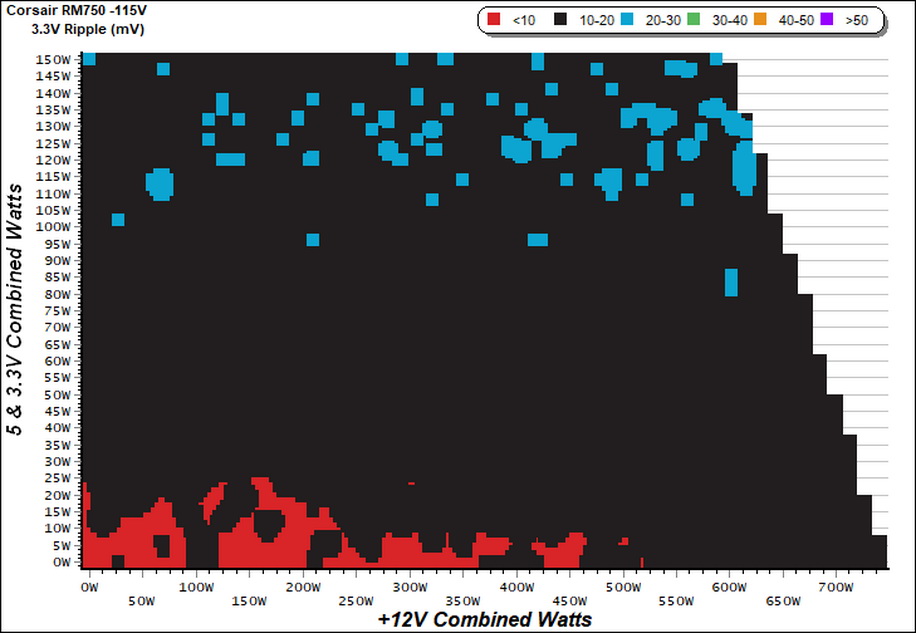

Infrared Images
We apply a half-load for 10 minutes with the PSU's top cover and cooling fan removed before taking photos with a modified FLIR E4 camera able to deliver an IR resolution of 320x240 (76,800 pixels).

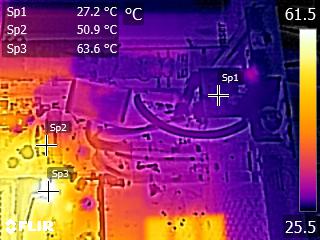
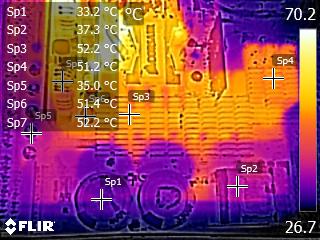
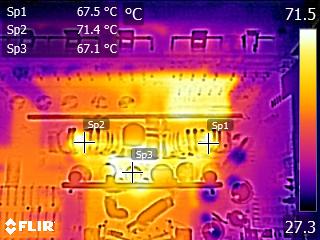

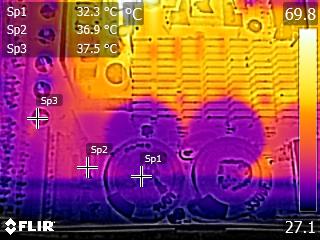
Low temperatures at the internals. As usual, the hottest area is the one hosting the DC-DC converters, because we apply a heavy load on the minors rails. The majority of power supplies don't have beefy heat sinks on those converters, so we push them hard in these tests to see how hot they can get.
MORE: Best Power Supplies
MORE: How We Test Power Supplies
MORE: All Power Supply Content
Current page: Protection Features, DC Power Sequencing, Cross-Load Tests and Infrared Images
Prev Page Load Regulation, Hold-Up Time, Inrush Current, Efficiency and Noise Next Page Transient Response Tests, Ripple Measurements and EMC Pre-Compliance Testing
Aris Mpitziopoulos is a contributing editor at Tom's Hardware, covering PSUs.
-
DSzymborski It's really hard to recommend this at the price. Offer this at $75 and it's interesting, but there's always something better at this price that'll undercut it and a few additional sales that put under this (SeaSonic Focus, EVGA G3, etc). I don't think this is even competitive at $100.Reply
